Disclosure: This article contains affiliate links. We may earn a commission from purchases at no extra cost to you, which helps our travel content.
Standing before the shimmering pink tiles of Nasir al-Mulk Mosque as morning light streams through its stained glass windows, I'm reminded why I've returned to Shiraz for the third time. This city—the cultural heartbeat of ancient Persia—offers photographers an intoxicating blend of architectural marvels, verdant gardens, and cultural depth that rivals any destination I've documented across five continents. What makes Shiraz truly special isn't just its photogenic qualities, but how these visual elements tell a profound story of Persian civilization's sustainable design principles that have withstood millennia.
The Pink Mosque: Mastering Light and Color
The Nasir al-Mulk Mosque (Pink Mosque) represents what I consider the pinnacle of light-based architectural design. Arriving before 9am is non-negotiable—this is when sunlight filters through the kaleidoscopic stained glass, transforming the prayer hall into a living canvas of dancing color. The mosque's genius lies in its east-facing orientation, a deliberate design choice allowing morning light to illuminate the interior space without artificial enhancement.
During my first visit, I made the rookie mistake of using automatic settings. The dramatic contrast between shadow and colored light demands manual exposure. I typically underexpose by 1-2 stops to preserve the vibrant colors, then recover shadow detail in post-processing. A polarizing filter proves essential here—it cuts reflections on the tiles and deepens the already rich colors.
The mosque's caretakers have grown accustomed to photographers, but respect remains paramount. I've found that a thoughtful conversation (even through basic phrases and gestures) and a small donation opens doors to areas typically off-limits to tourists. This granted me access to the upper balcony, providing a spectacular overhead composition of the main hall that became one of my most licensed images from Iran.

💡 Pro Tips
- Arrive before 8:30am to set up before the main light show begins at 9am
- Use a tripod with rubber feet to avoid damaging the historic floors
- Pack lens cloths to deal with condensation when moving between temperature zones
Eram Garden: Capturing Persian Paradise Design
The UNESCO-listed Eram Garden (Bagh-e Eram) epitomizes the Persian concept of paradise—a walled garden representing heaven on earth. What fascinates me most as someone documenting sustainable design is how these 13th-century gardens implemented sophisticated water management systems that modern architects are only now rediscovering. The central water channel doesn't merely serve aesthetic purposes; it's part of an ingenious gravity-fed irrigation system that maximizes water efficiency in this semi-arid region.
Photographically speaking, Eram Garden presents unique challenges. The contrast between deep cypress shadows and bright reflective pools requires careful exposure bracketing. I typically use my remote shutter release to capture multiple exposures for later blending, particularly during the golden hour when light quality is most dramatic but contrast is highest.
The pavilion at the garden's heart offers compelling symmetrical compositions, but don't overlook the detailed botanical opportunities. The garden houses rare plant specimens, including a 3,000-year-old cypress tree that local guides claim was planted by Zoroaster himself. Whether historically accurate or not, these ancient trees provide powerful foreground elements against the architectural backdrop.
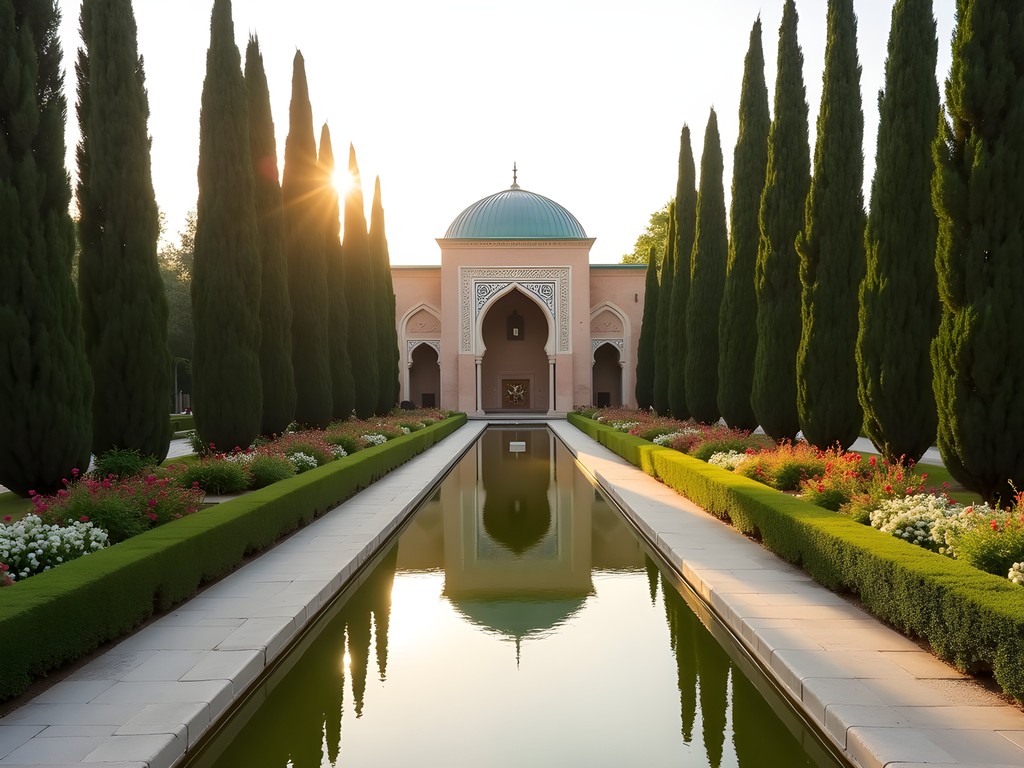
💡 Pro Tips
- Visit in April when the orange blossoms create an intoxicating fragrance and photogenic white blooms
- Bring a small gardening knee pad to get low-angle shots along the water channels
- Use the pavilion's reflection in the main pool as a compositional element
Shah Cheragh: Capturing the Forbidden Mirror Mosque
Shah Cheragh presents a fascinating photographic challenge—a spectacular mirror-mosaic shrine where photography is strictly regulated. As a non-Muslim visitor, my access was limited to specific areas and times, requiring careful preparation and cultural sensitivity. The interior features millions of tiny mirror fragments creating a mesmerizing infinity effect unlike anything I've seen elsewhere.
The key to photographing Shah Cheragh lies in respectful negotiation. I've found that approaching the site administration office a day before my intended shoot, explaining my documentary background and genuine interest in Persian architectural innovation, often results in special permissions. On my last visit, this approach granted me a 20-minute window to photograph the main chamber with minimal crowds.
The lighting inside is notoriously challenging—bright spots from hanging chandeliers contrasted with dark corners. I've found that a light meter provides more accurate readings than relying on in-camera metering. For stabilization in low-light conditions without a tripod (which isn't permitted inside), I use a camera stabilizing bean bag that can rest on railings or flat surfaces without damaging the historic site.
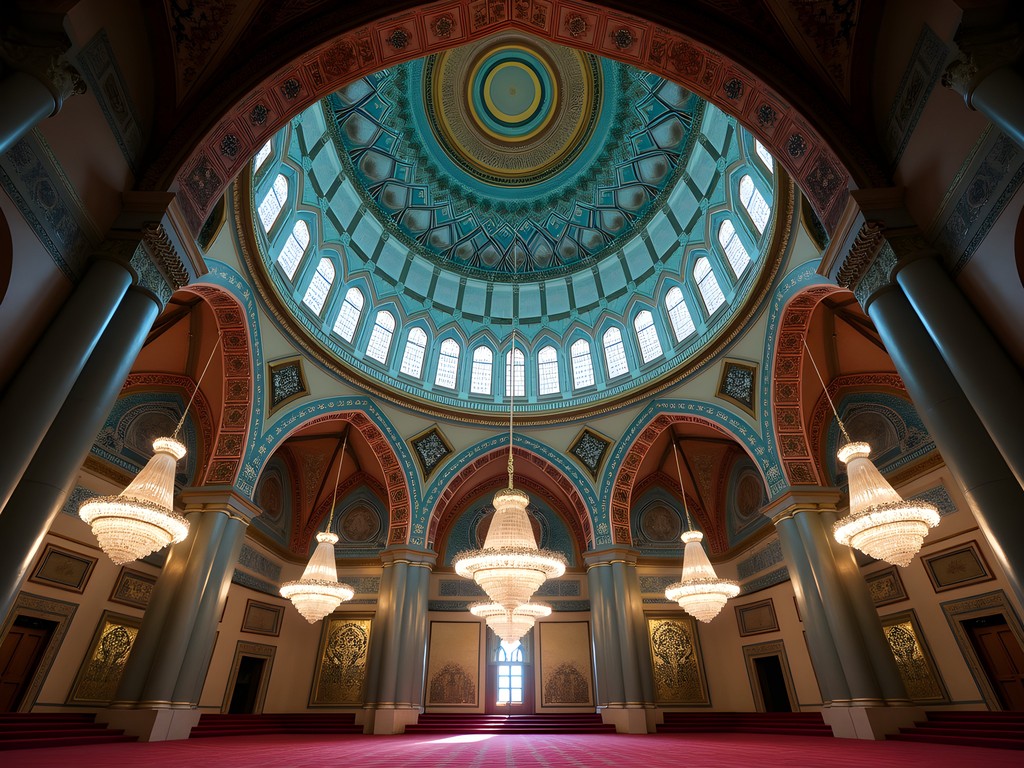
💡 Pro Tips
- Wear appropriate modest clothing including long sleeves and head covering for women
- Visit during off-peak hours (typically 1-3pm) for fewer crowds
- Practice your shots outside first, as time inside may be limited
Persepolis at Golden Hour: Ancient Stones and Modern Techniques
While technically located 60km northeast of Shiraz, no photographic exploration of the region would be complete without capturing the ancient ceremonial capital of the Achaemenid Empire. Persepolis represents the pinnacle of ancient Persian engineering and artistic achievement, with stone reliefs that have survived 2,500 years of history.
The site's vast scale requires strategic planning. I dedicate two separate visits: one arriving 90 minutes before sunset for the golden hour light on the eastern facades, and another arriving pre-dawn to capture the western structures bathed in morning glow. The stone takes on a honey-amber hue during these times that simply doesn't translate during harsh midday light.
For serious landscape photographers, I recommend packing a graduated ND filter to balance the bright sky with the darker stone structures. This allows for single-exposure shots that maintain detail across the dynamic range. My workflow typically involves setting up key compositions during midday reconnaissance, then returning with precise timing for optimal light.
The site's elevated position provides spectacular vantage points of the surrounding plains. On my last visit, unexpected spring storm clouds created dramatic backdrops against the ancient columns—a reminder that sometimes the most compelling images emerge when conditions seem less than ideal. I protected my equipment with a weather-resistant camera cover which allowed me to continue shooting as scattered showers passed through.
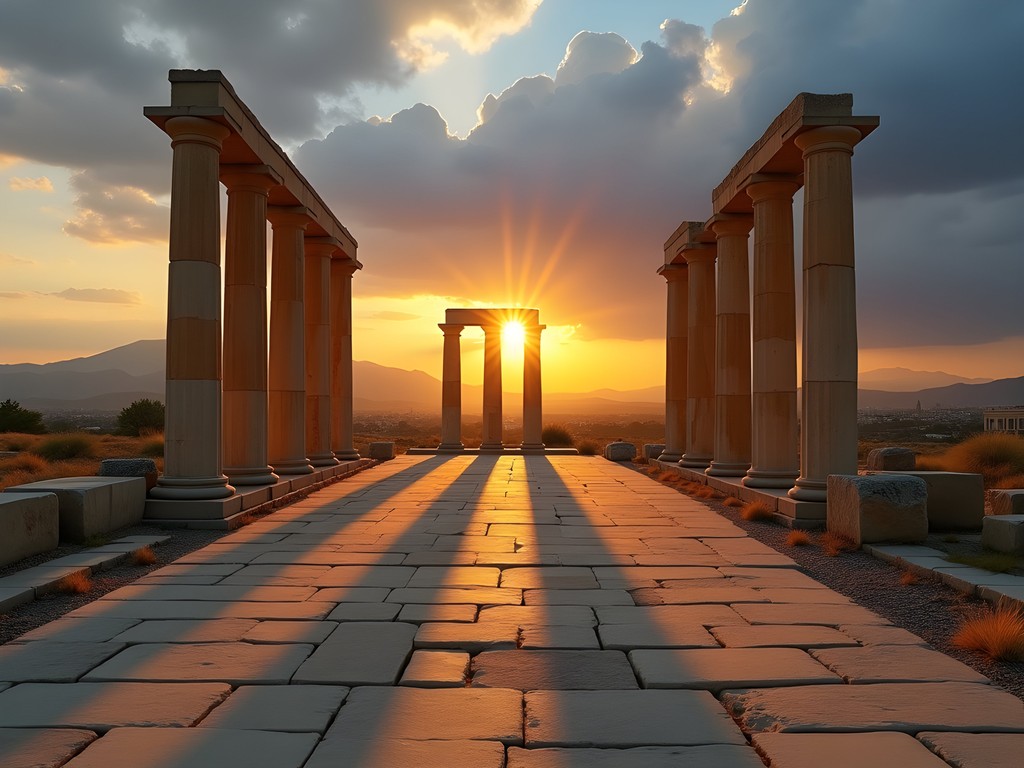
💡 Pro Tips
- Bring a telephoto lens (70-200mm) to isolate architectural details in the stone reliefs
- Use a polarizing filter to reduce glare on the polished stone surfaces
- Pack water and sun protection as the site offers minimal shade
Vakil Bazaar: Capturing Authentic Daily Life
After days focused on architectural marvels, I find the 18th-century Vakil Bazaar offers a refreshing change of photographic pace. Here, beneath vaulted brick ceilings designed for natural cooling (another example of Persian sustainable design ingenuity), local life unfolds in a tapestry of colors, textures, and human moments.
The bazaar presents unique challenges for documentary photography. The lighting varies dramatically between the dim corridors and bright courtyards, requiring constant adjustment. I've found that a fast prime lens offers the versatility and low-light performance needed for these conditions. The wide aperture allows for handheld shooting without flash, which helps maintain the authentic atmosphere and avoids disrupting merchants and shoppers.
The spice section provides a riot of color and texture, while the carpet sellers offer lessons in composition through their displayed wares. However, photographing people requires a thoughtful approach. I've developed a routine of making small purchases first, establishing rapport through basic Farsi phrases, then requesting permission for portraits. This approach has led to invitations for tea and conversations that enriched both my understanding of Shiraz and my photographic portfolio.
My most successful images from the bazaar came after three separate visits at different times of day. Morning captures the merchants setting up, midday shows the bustle of commerce, and late afternoon reveals a more relaxed atmosphere as locals gather to socialize. This thoroughness in documentation reveals the bazaar not just as a commercial space, but as a living community hub.
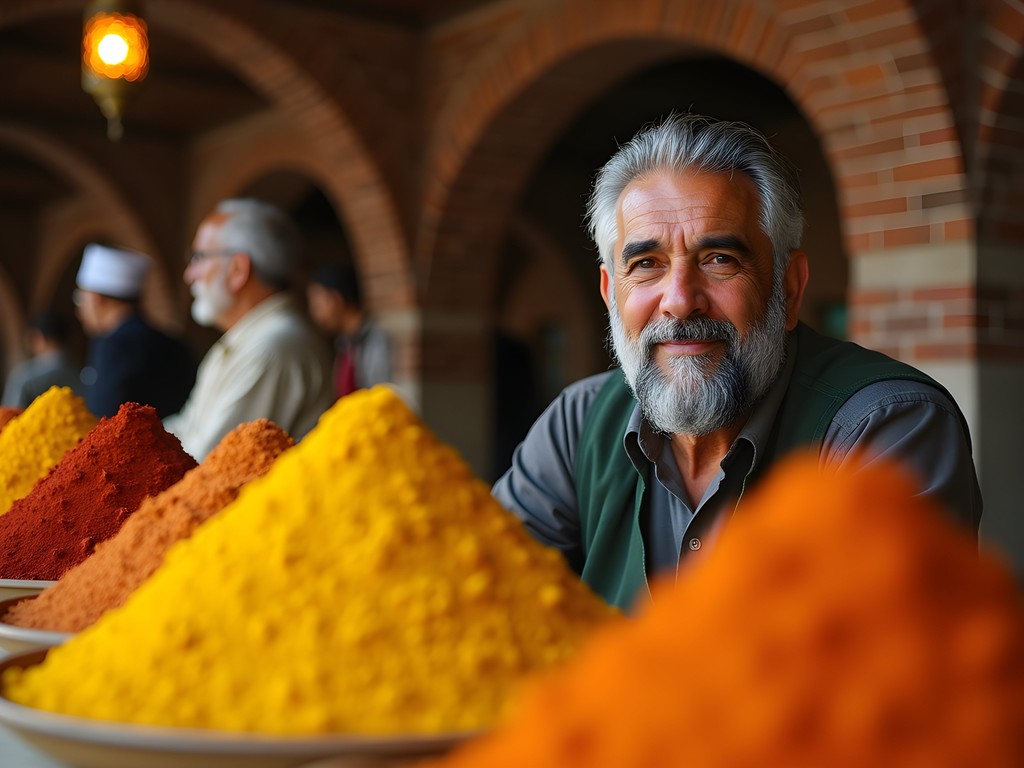
💡 Pro Tips
- Purchase small items before photographing merchants to establish goodwill
- Learn basic Farsi phrases like 'May I take your photo?' (Mishe aks begiram?)
- Visit the carpet section for lessons in composition and color theory
Final Thoughts
As I pack away my gear after a week in Shiraz, I'm struck by how this city embodies the intersection of visual splendor and sustainable design that has driven my documentary work for decades. From the ingenious natural lighting of the Pink Mosque to the sophisticated water management of Persian gardens, Shiraz offers photographers not just stunning visuals but meaningful stories of human ingenuity across millennia. The city demands technical versatility—from low-light mosque interiors to sun-drenched ancient ruins—but rewards those challenges with images of uncommon depth and beauty. Beyond the technical aspects, Shiraz reminded me why I began documenting architectural spaces: they reveal how cultures solve universal human challenges through design. Whether you're a seasoned photographer or developing your craft, Shiraz offers an unparalleled canvas for visual storytelling. Just remember to approach with respect, technical preparation, and the patience to wait for perfect light—the city will reward you with images that capture not just places, but moments in a 2,500-year continuum of Persian cultural expression.
✨ Key Takeaways
- Morning light at Nasir al-Mulk Mosque creates once-in-a-lifetime photographic opportunities
- Persian gardens offer lessons in sustainable design that remain relevant today
- Respectful cultural engagement opens doors to unique photographic access
- Technical versatility is essential for capturing Shiraz's diverse environments
- Multiple visits to key locations at different times yield the most compelling portfolio
📋 Practical Information
Best Time to Visit
April-May (spring) for moderate temperatures and blooming gardens
Budget Estimate
$75-100/day including mid-range accommodation, meals, and site entries
Recommended Duration
5-7 days minimum to properly photograph key sites
Difficulty Level
Challenging (Requires Visa Preparation And Cultural Research)
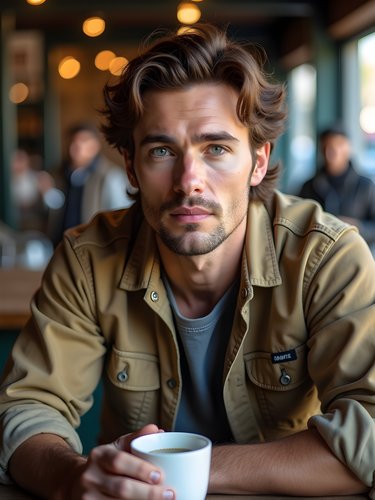
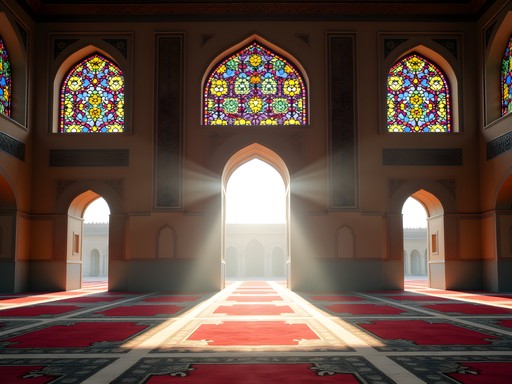

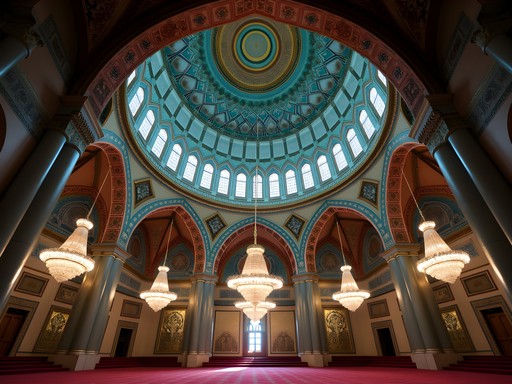
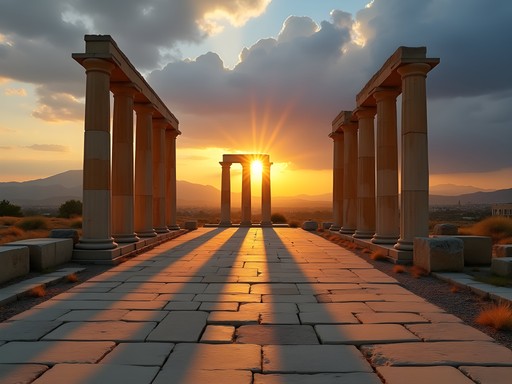










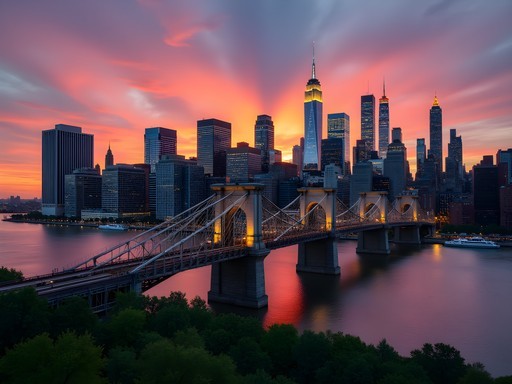
Comments
starclimber
Just got back from Iran last week and Shiraz was definitely the highlight! For photographers, don't miss the Tomb of Hafez around sunset - the gardens have this magical quality as the light fades. And the locals were so welcoming, often inviting me to join them for tea after seeing my camera. Definitely bring extra memory cards - you'll need them!
islandvibes
Was it easy to get around with just English? Thinking of going solo.
starclimber
Surprisingly yes! Many younger Iranians speak some English, especially in tourist areas. Download a Farsi translation app though, it helps with taxi drivers. And people are incredibly helpful.
Casey Andersson
Blake, your Persepolis golden hour shots are absolutely stunning! I visited last September and wish I'd had your tips beforehand. For anyone planning a visit, I'd add that hiring a local guide at Persepolis makes a massive difference - they know exactly which angles work best at different times of day. I stayed at the Zandiyeh Hotel which was perfectly positioned for early morning excursions. The rooftop there also offers a spectacular view of the city lights at dusk that's worth capturing. One question though - how did you manage to get such clear shots at Shah Cheragh? The lighting was challenging when I visited.
coolzone810
What lens did you use for those interior mosque shots? The colors are insane!
Blake Murray
Wide angle, 16-35mm f/2.8 for most of the mosque interiors. The key is shooting in RAW and being patient with the light.
Bryce Diaz
Man, this brings back memories. I visited Shiraz back in 2023 and was absolutely floored by Nasir al-Mulk. Blake, you've captured that impossible morning light perfectly! I made the rookie mistake of arriving at 10am my first day and missed the color show completely. Had to go back the next morning at sunrise. For anyone planning a trip, the locals I met recommended visiting on weekdays to avoid the crowds. Also, don't miss Vakil Bazaar for street photography - the light filtering through the roof creates these dramatic shadows that make for stunning black and white shots.
nomadzone
Did you need any special permission to take photos inside the mosques? Going next month and bringing my new camera!
Bryce Diaz
For most places like Nasir al-Mulk, just the standard entrance fee. But Shah Cheragh is trickier - they don't always allow cameras inside the main shrine area. I used my compact mirrorless which was less conspicuous than my DSLR. Dress modestly and always ask first!
islandvibes
Those Pink Mosque shots are incredible! The light streaming through those windows is magical.
Blake Murray
Thanks! It's all about timing - I was there right when they opened at 8am to catch that perfect light angle.
coffeestar6587
Beautiful photos! How did you manage to get shots of Shah Cheragh when photography is restricted? I'm planning a trip and would love to capture some memories there.
Blake Murray
Thanks! For Shah Cheragh, I arranged permission in advance through my local guide who has connections with the site administrators. Rules can change frequently, but having a local guide advocate for you makes a huge difference. Sometimes they allow photography during specific hours or on certain days with proper respect shown.
TravelBug
Gorgeous photos! Adding Shiraz to my bucket list right now.
travel_with_mike
That shot of the light streaming through the stained glass at Nasir al-Mulk is pure magic! 😍
Blake Murray
Thanks! It took three mornings of waiting for the perfect light, but totally worth it!
TravelingLens
Those reflection shots at Shah Cheragh are stunning! I thought photography wasn't allowed inside?
Blake Murray
Thanks! The rules change frequently. I got special permission through my guide who arranged it with the administration office a week in advance. They allowed me 20 minutes without flash photography after regular visiting hours.
IranExplorer
Great post! For anyone planning to visit, there's a small photography permit you can get at the tourism office in Shiraz that helps at some of the religious sites. Costs about $10 USD and saved me a lot of hassle.
Blake Murray
That's a great tip! I didn't know about that permit. Will definitely get one next time I visit.
Venture X
Premium card with 2X miles, $300 travel credit, Priority Pass